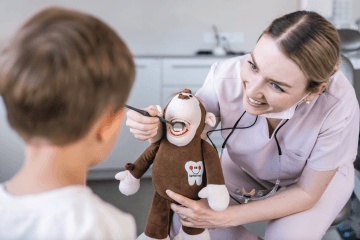Dental injuries in children
2 months ago


Dental injuries are relatively common in children and can occur at various ages. Children are most at risk during the phase when they are learning to walk or during sports activities. It is important to stay calm and react quickly to minimize consequences.
First steps after a tooth injury
First, gently wipe the mouth with a damp tissue to remove any blood or debris. Check whether the tooth is damaged, loose, or broken.
If the child has a broken tooth, try to find the broken piece and store it in a liquid (preferably milk or saliva). If the tooth is very loose or there is swelling, we recommend giving the child soft food and seeking a dentist.
Injuries to baby teeth
These are common and usually less serious – most often, there is a minor fracture or change in tooth position (pushed inward or forward). Minor enamel damage can be treated by smoothing the surface or placing a small filling.
NEVER reinsert a knocked-out baby tooth – it could damage the developing permanent tooth underneath.
Injuries to permanent front teeth
Broken permanent front teeth are more serious. If a tooth breaks, store the broken parts in milk or saliva and visit a dentist as soon as possible. In case of a completely knocked-out tooth, it is crucial to act immediately!
Using a tooth SOS box
There are special boxes with a solution designed to preserve knocked-out teeth. These are recommended for physically active children as they significantly increase the chances of successful reimplantation.
https://www.nazuby.cz/miradent-sos-zachranna-schranka-na-zuby
Frequently asked questions:
The approach is always individual. If it's a permanent tooth, the dentist will usually stabilize it by attaching it to an adjacent tooth, and a soft diet is recommended.
It depends on the case. If it's a large fragment of a permanent tooth, it can sometimes be reattached. Smaller chips are usually restored with a white filling.
In very young children, the tooth is usually just smoothed out, and at a follow-up visit, it may be restored with a white filling.
In milk, saliva, or a special SOS tooth box.
Yes, broken front teeth often hurt – either due to exposed nerves or irritation of the tissues around the tooth. The pain may be sharp, throbbing, or sensitive to cold, heat, or touch.
